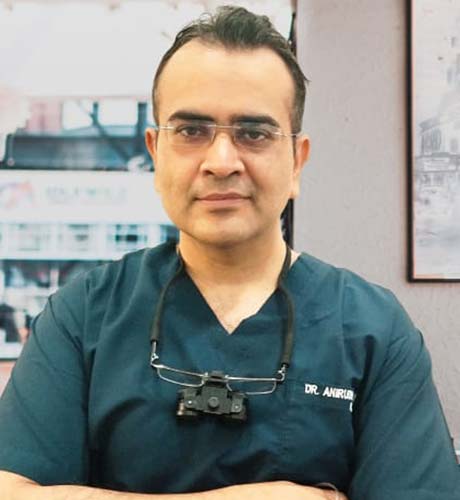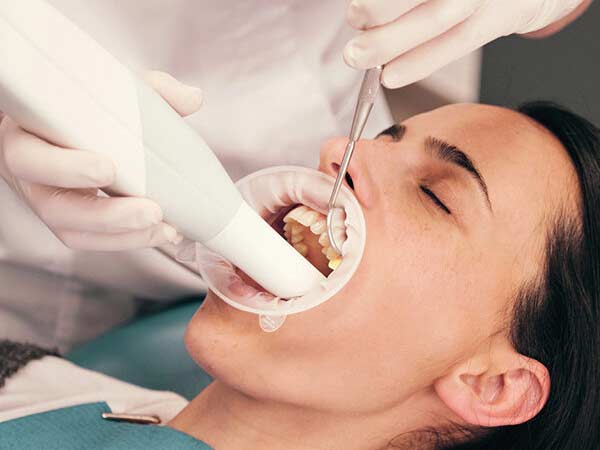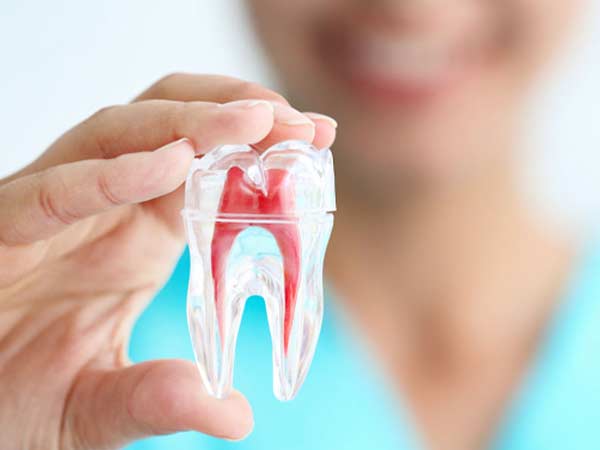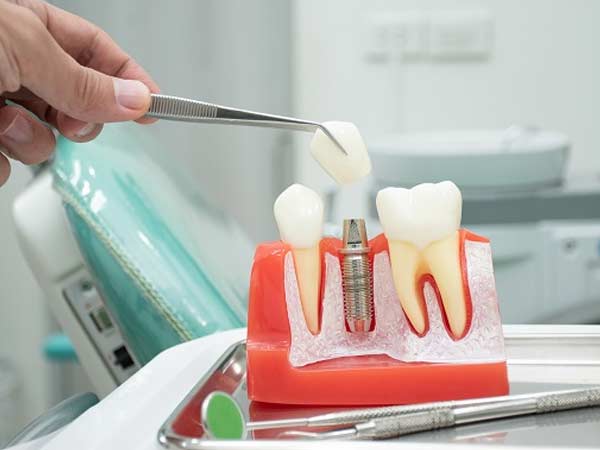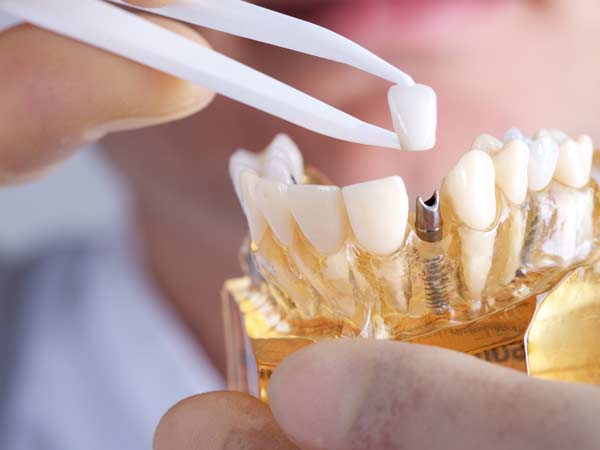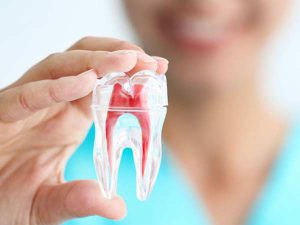 Endodontics is a treatment for severely infected or decayed teeth caused by part of the nerve of the tooth. The treatment consists of repairing and saving the teeth by removing the dental pulp, and then cleaning and sealing the inside of the tooth. Dental pulp is the tissue inside the tooth that contains blood vessels, nerves, and connective tissue.
Endodontics is a treatment for severely infected or decayed teeth caused by part of the nerve of the tooth. The treatment consists of repairing and saving the teeth by removing the dental pulp, and then cleaning and sealing the inside of the tooth. Dental pulp is the tissue inside the tooth that contains blood vessels, nerves, and connective tissue.
Carrying out endodontic treatment on teeth in this state corrects infected and abscessed teeth, which are infections characterized by inflammation and accumulation of pus. It is also necessary when the teeth have already reached this point. The causes for which these infections occur can be cavities, cracks or fractures, or repetitive dental procedures on the teeth.
Some of the most common symptoms that may suggest the need for a root canal are:
- Pain
- Long-term sensitivity to heat or cold
- Sensitivity when chewing and touch
- Gum swelling and discoloration
Also, in some cases, the patient may not have symptoms.
The pulp is necessary during the growth and development of the teeth. Once the tooth is already mature, it can survive without it, thanks to the tissues that surround it. For its part, the nerve is not important for the health of the tooth, so not having it will not affect its daily functioning.
What types of endodontics are there?
To classify endodontics, it is important to keep in mind that not all teeth have the same number of roots or root canals. In the roots of the teeth is where these root canals are located. Every tooth has at least one, but teeth often have several. Depending on the teeth to be treated, endodontics are classified as single-root, double-root, and multi-root.
Single root endodontics
They are endodontic procedures that are performed on teeth with a single root canal. Teeth such as the central and lateral incisors, the mandibular first and second premolars, and the maxillary and mandibular canines usually have only one root and thus one root canal.
Biradicular endodontics
These are procedures performed on teeth with two root canals. Teeth such as maxillary second premolars often have two root canals, even though they only have one root.
Multiradicular endodontics
They are endodontics performed on those teeth that have three or more root canals. The upper and lower molars usually have four root canals, since they usually have two canals in their mesial root.
Although most teeth usually have the number of root canals described in each of the types, all teeth can have anatomical variations. It is important that the dentist locates and treats all root canals to ensure a successful endodontic treatment.
Advantages of endodontics
A root canal is a treatment that allows to cure or heal an original tooth that has an infection or decay. The treatment is carried out quickly and with hardly any pain, and has multiple advantages for the patient who decides to undergo it. Both short and long term. The main advantages of a root canal are:
- Avoid the extraction of a natural tooth. Endodontic treatment saves and repairs severely decomposed or infected teeth, allowing the patient to keep their original tooth.
- Avoid halitosis and other consequences. Infected teeth can cause consequences beyond the damage to the tooth itself, such as halitosis. Recovering an infected tooth is not only beneficial for that tooth, but for the health of the mouth as a whole.
- It is a painless treatment. Endodontics is a treatment that hardly causes pain to the patient during the process. Current technology makes it a painless, fast and safe treatment. In fact, the pain is usually there before the treatment is carried out, since the infections and decomposition caused by caries are usually annoying.
- Regain chewing without discomfort. Damaged teeth can be sensitive to hot or cold foods and also to the touch or chewing of certain foods. Endodontic treatment allows you to eat normally again when the tooth is fully recovered.
- Prevents more expensive dental treatments. A decayed tooth can result in movement of the adjacent teeth. Therefore, with an endodontic treatment that restores the health of a tooth, the need for more expensive treatments such as orthodontics in the future can also be prevented.
Phases of endodontic treatment
Endodontics is a treatment that consists of healing a severely infected tooth. The treatment consists of five phases that begins with an X-ray and diagnosis of the patient’s condition, and ends once the tooth is already restored. These are the 5 phases of a root canal:
- Radiography and diagnosis. The first step of an endodontics is to perform an X-ray that will help assess the possible involvement of the pulp or the nerve of the tooth. This x-ray allows the dentist to make a diagnosis, who will decide which treatment is appropriate.
- Local anaesthesia. The endodontic process begins with the application of a local anaesthetic to numb the area. In addition, a rubber dam is placed around the tooth to prevent saliva or blood from entering while the root canal is performed.
- Pulp extraction. To access the nerve and pulp chamber, the tooth is drilled. The pulp, bacteria, and decomposed nerve tissue are removed from the tooth. Next, the sides of the root canals are scraped and filed. Once done, the remains are removed with chlorhexidine or sodium hypochlorite.
- Root sealing. With the tooth completely clean and disinfected, the ducts are sealed. A special sealing paste and gutta-percha, a rubbery compound, are placed in the root canal of the tooth.
- Restoration of the tooth. Usually, teeth that need a root canal also have a fracture or extensive decay. It is often necessary to place a crown, post, or other restoration to protect the tooth and fully restore it. Both for its masticatory functions and aesthetically.

